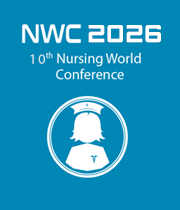Title : Enhancing patient care: Collaborative efforts of the coding & clinical documentation integrity team and the clinical nurse specialist
Abstract:
Postpartum hemorrhage (PPH) is the leading cause of maternal mortality globally¹,³ and a top priority for The Joint Commission², with rising rates since 2000¹. A history of PPH increases the risk in future pregnancies. After analyzing electronic medical record (EMR) reports with comparisons to the ICD-10 reports, the Clinical Nurse Specialist (CNS) discovered a 400-patient discrepancy. She worked with coding and clinical documentation integrity (CDI) teams to educate them and revise the provider query process. The team analyzed comparative reports and data with the healthcare system’s consultant firm. In 2024, both reports were retrieved and analyzed, showing fewer discrepancies, better documentation, and more accurate patient care. This CNS-led initiative improved the accuracy of documentation and coding of PPH along with more accurately capturing the risk of mortality (ROM) and the severity of illness (SOI) within our three-hospital healthcare system. Our team reduce the inconsistencies while developing and implementing standardized interdisciplinary team communication for patients who experience PPH. The CNS leveraged her clinical expertise by collaborating with coding and CDI teams to improve documentation and optimize coding practices, promote accurate reimbursement and financial stability, and enhance effective communication throughout the continuum of care. Within our healthcare system, there were 228 patients (or 31.7%) with quantitative blood loss (QBL) > 1000mL in the pre-intervention group who had ICD-10 capture for PPH, and in the post-intervention group, there were 278 patients (or 44.8%), with QBL > 1000mL who had a PPH ICD-10 code. Thus, we identified a 13.1% improvement in ICD-10 coding. A Chi-Square Test for Independence (with Yates’ Continuity Correction) indicated a statistically significant difference between pre-and post-intervention and ICD-10 code capture, χ2 (1, n= 1339) = 23.85, p < .001, phi= .16, indicating a small effect size. Our analysis also showed statistical improvement in total cost capture as well as more accurate capturing of the severity of illness and risk of mortality between the pre-intervention and post-intervention groups. Evaluating strategies, including educating the coding/CDI teams on clinical definitions, developing follow-up processes, and educating providers on the importance of consistency in documentation from admission to discharge, can enhance the capture of overall patient care within an organization. At the same time, PPH and SOI/ROM rates will likely increase as documentation improves, and teams will continue identifying ways to improve the overall rates. Other settings can apply these principles, using this model of collaboration to accurately capture patient care and identify the SOI/ROM for other areas outside of obstetrics.



